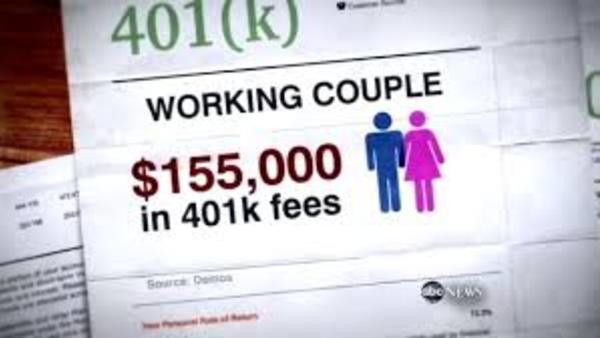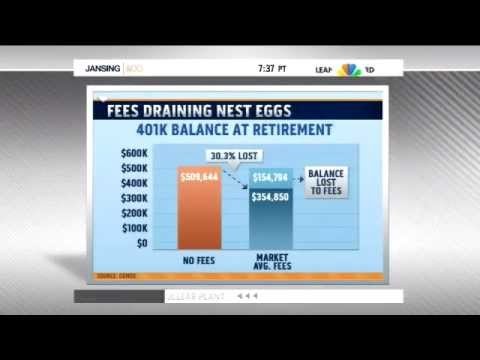The Hidden Fees In 401(k)s
Post on: 16 Март, 2015 No Comment

If you never managed to sit through a company benefits meeting, you’re still at least vaguely familiar with the concept of a 401(k). Even those workers with the most cursory grasp of investing have heard the term, and have a general understanding that a 401(k) is a savings vehicle that’s supposed to take care of you in your retirement years. More formally, a 401(k) is a defined contribution plan, which means that payments into it are fixed and not arbitrary. You put in $x per paycheck, your employer contributes up to a maximum of $x-y and years later you’re enjoying some degree of financial independence instead of begging for meals. (By the way, it warrants repeating that you should accept that employer match-up to the maximum allowed. Otherwise, you’re rejecting free money .)
No Free Lunch
Unfortunately, investor naiveté is such that millions of people incorrectly assume that the 401(k) provider — the mutual fund company that devises the baskets of holdings into which your money goes — neither wants nor accepts anything for its trouble. The truth is that the principle that there’s no such thing as a free lunch extends into even such intangible realms as financial planning. Your 401(k) company collects a fee every month. And the cumulative size of those fees can be a huge determinant of your eventual returns. Or can it?
As if to assuage the fears of the misguided few who think that 401(k)s are somehow all-inclusive and free of fees, last year the Department of Labor mandated that your 401(k) provider disclose all its fees in the prospectus statement that it sends you every year.
Naming the Fees
The most firmly entrenched of these hidden fees even has a name, or at any rate a sequence of letters and numerals. 12b-1 fees are named after the relevant section of the Investment Company Act of 1940, which was enacted decades before such investments had been popularized and democratized to the extent that they are today. Generally filed under marketing fees, 12b-1 fees are ostensibly earmarked for the intermediaries who sell the specific 401(k) plans to your employer. These fees, capped by the Act at 1% of assets, thus constitute a commission, which is to say an expense (as distinguished from an investment in the fund’s possible returns.)

12b-1 fees are separate from investment management fees. which are the cut the 401(k) company takes for itself. For instance, Fidelity Investments is America’s biggest provider of 401(k)s. A typical advisory fee for a Fidelity portfolio account starts at 1.7% and decreases from there, by as much as half, depending on how much you put in. So there’s a surefire way to avoid at least some fees: have a large balance.
Types of Fees
There are essentially four major categories of fees. To illustrate the point, here’s a sample account summary, not from a 401(k) provider. but rather from a 3rd-party firm that only administers plans and keeps records. If your company happens to do business with this 3rd-party firm, you’d see this table (or a prorated equivalent) in your quarterly statement:














